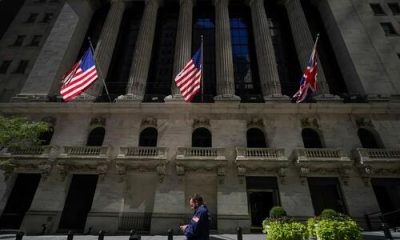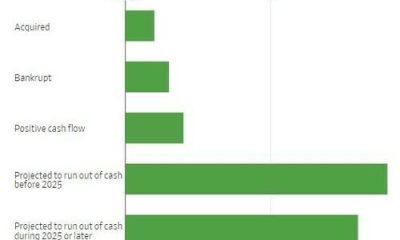Economics
Who Says You Can’t Time The Market?
Who Says You Can’t Time The Market?
Authored by Jesse Felder via TheFelderReport.com,
The following is based on an excerpt of our latest…

Who Says You Can’t Time The Market?
Authored by Jesse Felder via TheFelderReport.com,
The following is based on an excerpt of our latest monthly Chart Book featured on The Felder Report PREMIUM.
A few months ago I wrote post about using the Coppock Curve as a market timing tool. Well, the Coppock Curve for the S&P 500 Index did, in fact, turn higher in March (even if you need a magnifying glass to see it). Other trend-following measures are positive for the index, too: it remains above its 200-day moving average as does the 50-day moving average. These sort of signals suggest this index is currently in an uptrend.
However, it is also true that the Coppock Curve did turn higher prematurely in December of 2001, as well, before the S&P 500 Index fell another 30% or so into the fall of 2002. Like any other indicator, this one is not perfect.
Moreover, the late-2001/early-2002 time frame makes for a very interesting price analog.
During the bursting of the Dotcom Bubble, there were many spectacular rallies, very similar the one we have seen in Big Tech stocks to start the year, that gave investors hope the bottom was in and that it was time to get greedy.
However, these proved to be false dawns as prices went on to make lower lows.
If the collapse of SVB is a harbinger of increasing financial distress among non-profitable start ups over the course of this year, then there is a very good chance these stocks, which were the focus of the mania in 2021, have significantly more downside ahead of them which will have consequences for both the broader economy and risk appetites in general.
Pure trend-followers will pay no mind to this sort of analysis, simply focusing on the fact that their indicators suggests the downtrend is over, at least for now. Those using a more holistic approach may place less weight on those trend signals in favor of a weight of the evidence approach which likely urges a bit more circumspect view of this year’s rally. Passive investors will pay no mind to any of it and remain fully invested regardless.
In each case, investors are making an implicit market-timing decision (sometimes called a forecast); because any decision to invest or not represents a forecast, there’s just no avoiding it. So what is your preferred market-timing technique?
Tyler Durden
Fri, 04/07/2023 – 09:40
bubble

Argentina Is One of the Most Regulated Countries in the World
In the coming days and weeks, we can expect further, far‐reaching reform proposals that will go through the Argentine congress.
Crypto, Crude, & Crap Stocks Rally As Yield Curve Steepens, Rate-Cut Hopes Soar
Crypto, Crude, & Crap Stocks Rally As Yield Curve Steepens, Rate-Cut Hopes Soar
A weird week of macro data – strong jobless claims but…
Fed Pivot: A Blend of Confidence and Folly
Fed Pivot: Charting a New Course in Economic Strategy Dec 22, 2023 Introduction In the dynamic world of economics, the Federal Reserve, the central bank…




















